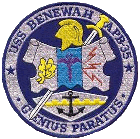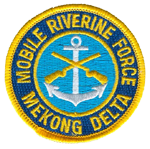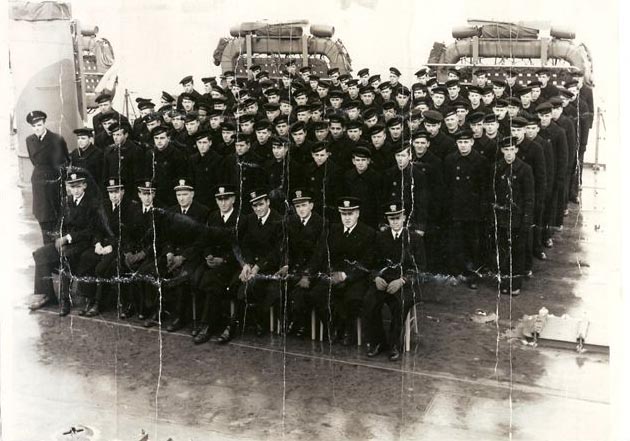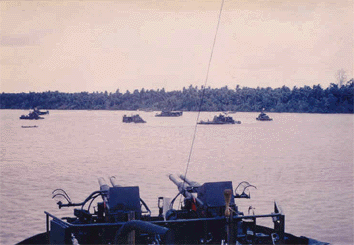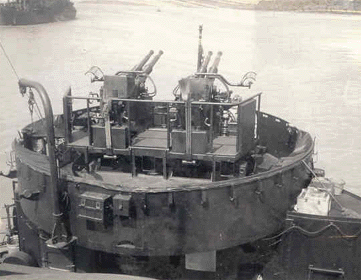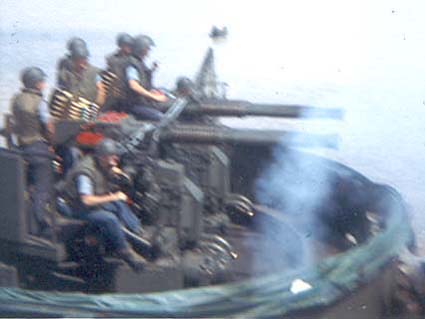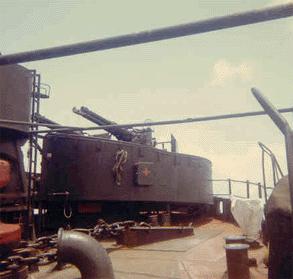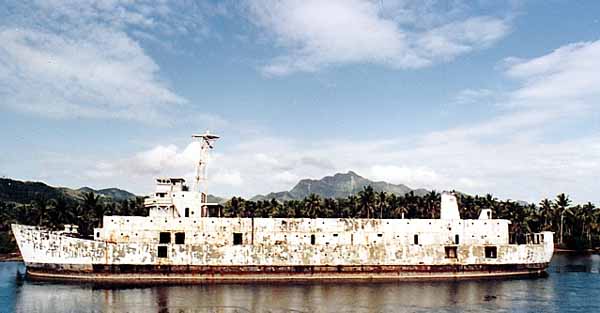Courtesy of MRFA President Albert B. Moore
There are not too many Old Sailors around who can lay claim to having served on a “Green Ship”, much less a “Green Flagship”. The Vietnam War was an exception to the rule. The “Green Ship” Fleet consisted of a number of World War II LST’s (which were converted into APB’s), self-propelled barracks ships and ARL’s (which were converted into small boat repair ships). These ships were ideal for use on the brown waters of the Mekong Delta.
When I received orders to the USS Benewah (APB-35), I had never heard of an APB. My orders specified I should attend C.I. school prior to joining the ship’s company. I had never heard of a C.I. School. After the yeoman and I went through some paper work, I found out what an APB was and what C.I. school meant. (Counter Insurgency) Oh Boy!!
I thought I would enlighten some of you Old Sea Dogs out there on the history of an APB which was converted to a “Green Flagship”. For the Navy crews who served on APBs and the Boat crews of Task Force-117 and the Riverine Infantry of the 9th Infantry Division, I hope this will bring back some long-forgotten, and in some cases, unforgotten memories.
The USS Benewah was a self-propelled barracks ship built on an LST class 542 hull. LST class ships were named after counties in the United States. The Benewah’s namesake was Benewah County, Idaho. She was built at the Boston Naval Shipyard, and launched on 6 May 1946. From 1946-66, Benewah’s mission was generally supportive, from housing Seabees in Newfoundland to serving as the Flagship for Commander, Fleet Air Eastern Atlantic and the Mediterranean in Naples, Italy. She was also home to many recommissioning and decommissioning crews for two decades. The Benewah, herself, was decommissioned and recommissioned three times.
In July 1966, the Benewah entered the Philadelphia Naval Shipyard for conversion and modernization prior to her return to active duty. She was specifically modified for use in the river regions of South Vietnam. Although she retained her designation of APB-35, the was converted to a Brigade Command Ship and served as the Flagship for River Assault Flotilla One. She was recommissioned on 28 January 1967.
Although she was obviously not a candidate for cruiser or destroyer duty, she was a far cry from the commissioned in 1946. An APB’s original armament consisted of two 20 millimeter gun mounts. In 1967, Benewah was outfitted with two quad-barreled 40 millimeter mounts, two 3’/50 installations and 20 strategically placed 50 and 30 caliber machine guns. In addition, she was equipped with 25 fiberglass assault boats, which were utilized by Army troops who made her their base of operations. A large helicopter landing platform was also built over her superstructure which was used for deploying troops and receiving casualties.
Following a week’s layover at the Naval Amphibious Base, Little Creek, Va., the Benewah was deployed on 22 Feb.1967 to the Far East and the brown waters of Vietnam’s Mekong Delta. She pulled into the Atlantic side of the Panama Canal on 2 March. Her next stop was Naval Base Pearl Harbor for a short upkeep, and yes, what had been rumored to happen, happened upon her arrival. The crew painted the ship green!!! As if that wasn’t enough, the color was Army olive green. But the crew generally seemed to agree that their mission was unique, so they looked forward to serving on a ship that looked a little different. Different she was! After her new paint job, the Benewah again set a course for Vietnam. On 22 April, she was welcomed in country by the flashing light of a Man O’War, which signaled … “Welcome to Vietnam, whatever you are!”
She became the Flagship for Commander, River Assault Flotilla One, Mobile Riverine Force Task Force-117 and Commander, 2nd Brigade, 9th Infantry Division. After a short stay in Vung Tau, the Benewah moved up river and began a series of combat riverine assault operations in the Mekong Delta. When the Navy Boat Crews and the Riverine Infantry embarked, the ship’s company increased from 160 to 1150 personnel on board. She participated in all Coronado Operations from I-XI, and played a large role during the TET offensive in 1968, moving from one spot to another. The 10,000th helicopter landing was made on her deck in the Fall of 1968 by the 9th Aviation Battalion.
The Benewah operated in Giant Slingshot and numerous other operations on brown waters of the Delta. She was frequently fired on and her guns went into action on many occasions. In June 1970, she participated in an incursion into Cambodian areas to aid forces interdicting the Vietcong supply lines running through the country. The Benewah left Vietnam on 27 Nov. 1970 and headed for Naval Base Subic Bay in the Philippines, after serving for 43 consecutive months in the Mekong Delta. Following her arrival in Subic Bay, an inspection board determined she was unfit for active service and she was turned over to the Naval Station Subic Bay to serve as a station ship.
After being decommissioned, she remained on the active list in an in-service status and was re-designated as Auxiliary 1X-311 until 1 September 1973, when her proud name was finally removed from the list of Navy ships. In May 1974, she was transferred to the Republic of the Philippines. In 1975, the Benewah was sunk by the Philippine Navy and used as a barrier reef.
The Benewah served her country loyally during war and peace. She was hit numerous times during her service on the brown waters of the Mekong Delta. She received many awards and decorations for her Vietnam service: Combat Action Ribbon, (3) Presidential Unit Citations (4); Navy Unit Commendations; (1) Meritorious Unit Commendation; Vietnam Service Medal with (14) Battle Stars; RVN Gallantry Cross with Palm, RVN Civil Action Medal, First Class, with Palm, and the RVN Campaign Medal with 60′ device. Benewah was one of the most decorated ships of the Vietnam War.
Though the Benewah was the first “Green Ship” to serve in the Mekong Delta, as part of the Mobile Riverine Force, she wasn’t alone. There were three more APB’s – USS Colleton (APB-36), USS Mercer (APB-39) and USS Nueces (APB-40). There were 5 ARL’s – USS Satyr (ARL-23), USS Sphinx (ARL-24), USS Askari (ARL-30), USS Indra (ARL-37) and USS Krishna (ARL-38) and many APL’s and YRBM’s. There were also hundreds of small green River Boats – the Monitors, Zippos, Assault Patrol Boats, Armored Troop Carriers, PBRs and though not “Green”, the Swift Boats of the Task Force 115. We cannot forget the LST’s who made the dangerous supply runs up the narrow, shallow rivers of Vietnam and the numerous other “Green” and “Gray” auxiliary vessels that made up the great “Green Fleet” of Vietnam.
Albert B. Moore
Here is a photo of the USS Benewah before she was sunk for an artificial reef. It was a sad day for a gallant old ship that served many and accomplished much:
Click HERE to view Bruce Holdsworth’s Photos during his time on the USS Benewah in 1968-69.

